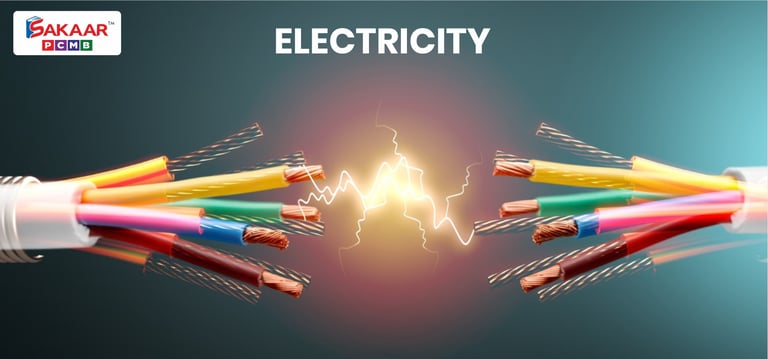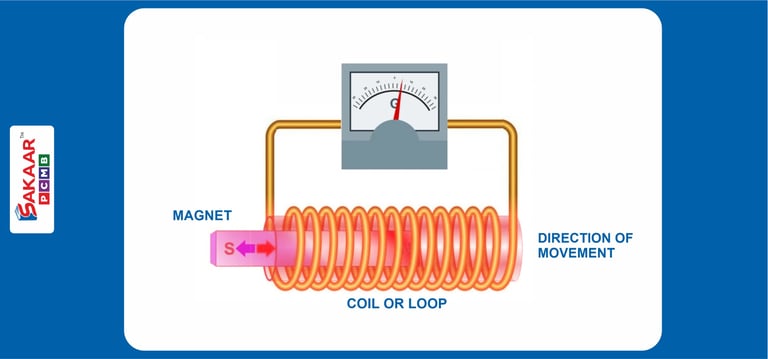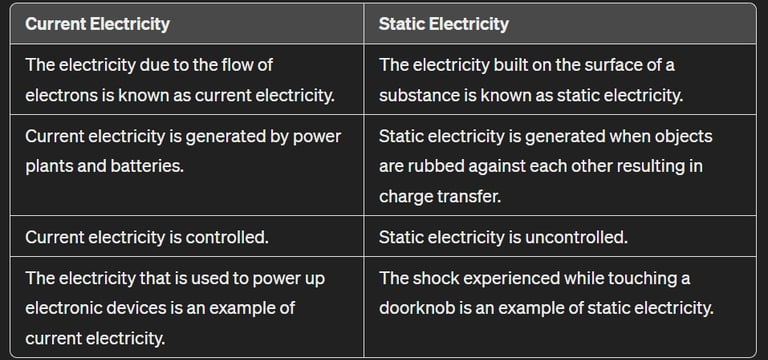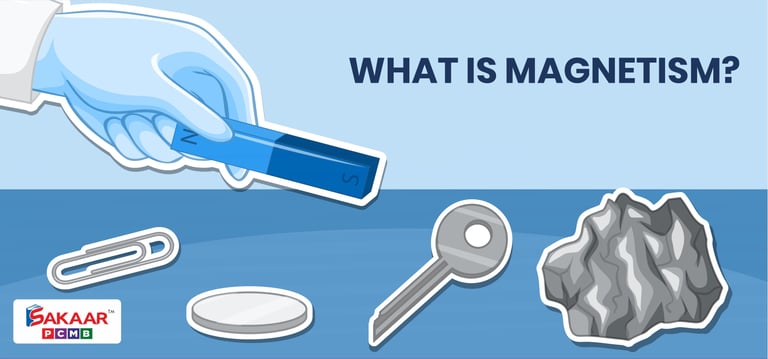Electricity and Magnetism

Electricity and magnetism are one of the most interesting topics in physics. In this article, we will learn about the concepts of magnetism and electricity and the relationship between them. We shall also learn the magnetism and electricity definition, interesting concepts like electron movement, conductors, semiconductors, and insulators, and magnetic fields.
Table of Contents
What Is Electricity?
Electron Movement
Conductors
Insulators
Semiconductors
What Is Magnetism?
What Is a Magnetic Field
Difference Between Electricity and Magnetism
Frequently Asked Questions (FAQs)
What Is Electricity?
Electricity is intricately linked to the presence and movement of charged particles. Understanding how energy travels through copper wire and through space is essential to grasping the fundamentals of electricity. Electric current, electromotive force, and the mechanisms that power devices like landing lights or hydraulic pump motors are all rooted in these principles. Each of these aspects requires delving into the basics, building upon foundational ideas to tackle more complex questions about electricity and electronics. This journey starts with a deep dive into the nature of matter, where molecules are composed of atoms containing electrons, protons, and neutrons.
Electricity can be categorized as either static or dynamic, depending on the state of electrons—whether they are stationary (static) or moving (dynamic). Static electricity refers to the accumulation of electrical charge on an object's surface. Unlike dynamic electricity seen in AC or DC currents, static electricity doesn't involve continuous flow. It typically occurs when non-conductive materials like rubber, plastic, or glass are rubbed together, causing electron transfer and an imbalance of charges between them. This charge imbalance leads to attractive or repulsive forces between the objects involved.


Join Best Learning Program....




Frequently Asked Questions – FAQs
Q1: What is current electricity in Physics?
Current electricity refers to the flow of electrons in an electric circuit from one place to another.
Q2: How is current electricity different from static electricity?
Charges continually flow in a kind of electricity known as current. Static electricity is static in contrast to current electricity, which is dynamic.
Q3: How does current electricity work?
Current electricity is the constant flow of electrons. Electrical energy is transported from one point to another in a circuit by the motion of electrons.
Q4: Do circuits use static or current electricity?
Circuits use current electricity.
Q5: Who discovered current electricity?
Benjamin Franklin discovered current electricity.
Electron Movement
An atom's valence dictates its capacity to either gain or lose an electron, crucially shaping its chemical and electrical characteristics. These attributes fall into three main categories: conductor, semiconductor, or insulator, delineated by the material's capacity to generate free electrons. Materials abundant in free electrons enable higher current conduction.
What Is a Magnetic Field?
Similar to gravitational fields, magnetic fields are intangible and imperceptible to touch. While we can physically sense the Earth's gravitational pull on ourselves and our surroundings, the direct experience of magnetic fields eludes us. Our awareness of magnetic fields arises from their impact on various objects, such as magnetized metal pieces, naturally magnetic rocks like lodestone, or temporary magnets like copper coils carrying an electric current. For instance, placing a magnetized needle on a cork in a water bucket causes it to gradually align with the surrounding magnetic field. Similarly, activating an electrical current in a copper wire can cause a nearby compass needle to react. These observable phenomena have driven the conceptualization and understanding of magnetic fields.
Chemical Reactions in Batteries:
Current electricity, specifically direct current (DC), can be generated through chemical reactions in batteries.
Batteries convert chemical energy into electrical energy through redox reactions occurring within their cells.
The flow of electrons from the negative to the positive terminal of the battery creates a direct current, which can power various devices and systems.
These methods provide essential sources of current electricity for a wide range of applications, from powering electrical grids to operating portable electronic devices.
What Is Magnetism?
Magnetism is a fundamental concept in physics that aids in comprehending one of nature's fundamental interactions: the interaction among moving charges. Similar to gravity and electrostatic force, magnetic force operates as a distance-dependent interaction.
Relative Motion Between Magnetic Field and Coil:
It's important to emphasize that for current electricity to be generated through the relative motion between a magnetic field and a coil, this setup must be integrated into an electric circuit. Without a closed circuit, electrons would have nowhere to flow, and the generation of current electricity would not occur.


The direction of the current through the wire is determined by the relative alignment of the magnetic field and the wire's direction.
Current Electricity vs Static Electricity:
In this section, we'll explore the distinction between current electricity and static electricity:
Static Electricity: Static electricity pertains to the accumulation of electric charges on the surface of materials or substances. These charges remain stationary until they are discharged or grounded. This type of electricity is generated through friction. Essentially, static electricity occurs when positive and negative charges become separated.


Conductors
Gold, copper, and silver are renowned for their abundance of free electrons, making them excellent conductors. These elements feature atoms with a small number of loosely bound electrons in their outer orbits. When exposed to heat energy, these outer orbit electrons can become unbound, freely moving through the material. For instance, copper and silver each have a single electron in their outer orbits, resulting in billions of free electrons in a piece of silver wire at room temperature.
Insulators
These are materials that do not conduct electrical current very well or not at all. Good examples of these are glass, ceramic, and plastic. Under normal conditions, atoms in these materials do not produce free electrons. The absence of the free electrons means that electrical current cannot be conducted through the material. Only when the material is in an extremely strong electrical field will the outer electrons be dislodged. This action is called breakdown and usually causes physical damage to the insulator.
Semiconductors
Semiconductors occupy a middle ground between conductors and insulators, lacking proficiency in both conduction and insulation. Silicon and germanium stand out as the most commonly utilized semiconductor materials.


